When choosing the right kitchen sink, the material is a critical factor that affects both the aesthetics and functionality of your kitchen. Kitchen sinks come in a wide variety of materials, each offering its own set of advantages and drawbacks. Selecting the right sink material depends on your lifestyle, kitchen design, and the type of use your sink will get daily. Some materials are incredibly durable and low-maintenance, while others offer unmatched beauty and style but may require more care. The decision you make regarding your sink material can have a significant impact on the overall functionality of your kitchen and the amount of maintenance you will need to perform over time.
Stainless steel is one of the most popular materials for kitchen sinks, and for good reason. It is known for its durability, affordability, and ease of cleaning. Stainless steel sinks resist corrosion, making them ideal for households that use their kitchen sink frequently. These sinks come in various thicknesses, known as gauge levels—the lower the gauge, the thicker the steel. Thicker steel sinks (lower gauge) tend to be more durable and quieter than thinner ones, which can sometimes dent more easily and produce a louder sound when dishes or utensils hit the surface. Stainless steel sinks also have a sleek, modern appearance, fitting well with contemporary and minimalist kitchen designs.

Cast iron sinks coated with enamel are another highly popular option, particularly for homeowners who prefer a more traditional or farmhouse-style kitchen. These sinks are incredibly sturdy and long-lasting, often lasting decades with proper care. The enamel coating gives the sink a glossy finish and is available in a wide variety of colors, which can add a pop of personality to your kitchen. Cast iron sinks are also very resistant to scratches and dents. However, one of the main drawbacks is that the enamel can chip or stain over time if not maintained properly. Cast iron sinks are also very heavy, requiring additional support from the countertop and cabinets, making installation more complex.
Composite granite sinks have gained popularity in recent years due to their striking appearance and high durability. These sinks are made by combining crushed granite or quartz with resin, creating a material that is highly resistant to heat, scratches, and stains. Granite composite sinks are also non-porous, which means they are more resistant to bacteria and grime build-up, making them an excellent option for busy kitchens where hygiene is a priority. The sinks come in various matte finishes and muted colors, which can complement a variety of kitchen styles. One potential downside to granite composite sinks is that they can be more expensive than other options, and they may require more careful cleaning to avoid dulling their finish over time.

Fireclay sinks are another beautiful option for those seeking a durable, rustic-looking sink. Similar to cast iron, fireclay sinks are made from clay fired at extremely high temperatures and coated with enamel, resulting in a highly durable surface. Fireclay sinks are resistant to scratches, chips, and stains, and they also handle high temperatures very well. These sinks are especially popular in farmhouse-style kitchens because of their classic, vintage look. However, like cast iron, fireclay sinks can be heavy and may require additional support during installation. They can also be more expensive than stainless steel or composite sinks.
Copper sinks offer a unique, luxurious look that can make a bold statement in any kitchen. These sinks are made from pure copper and are prized for their warm, reddish-brown color, which can develop a natural patina over time. The patina adds to the sink’s charm, giving it an antique, weathered look that changes with age. Copper is also naturally antimicrobial, which means it can kill bacteria and viruses that come into contact with the sink’s surface. Despite these benefits, copper sinks require more maintenance than other materials. They can be prone to scratching and denting, and the patina can sometimes darken unevenly if the sink is not cleaned or dried properly after use.
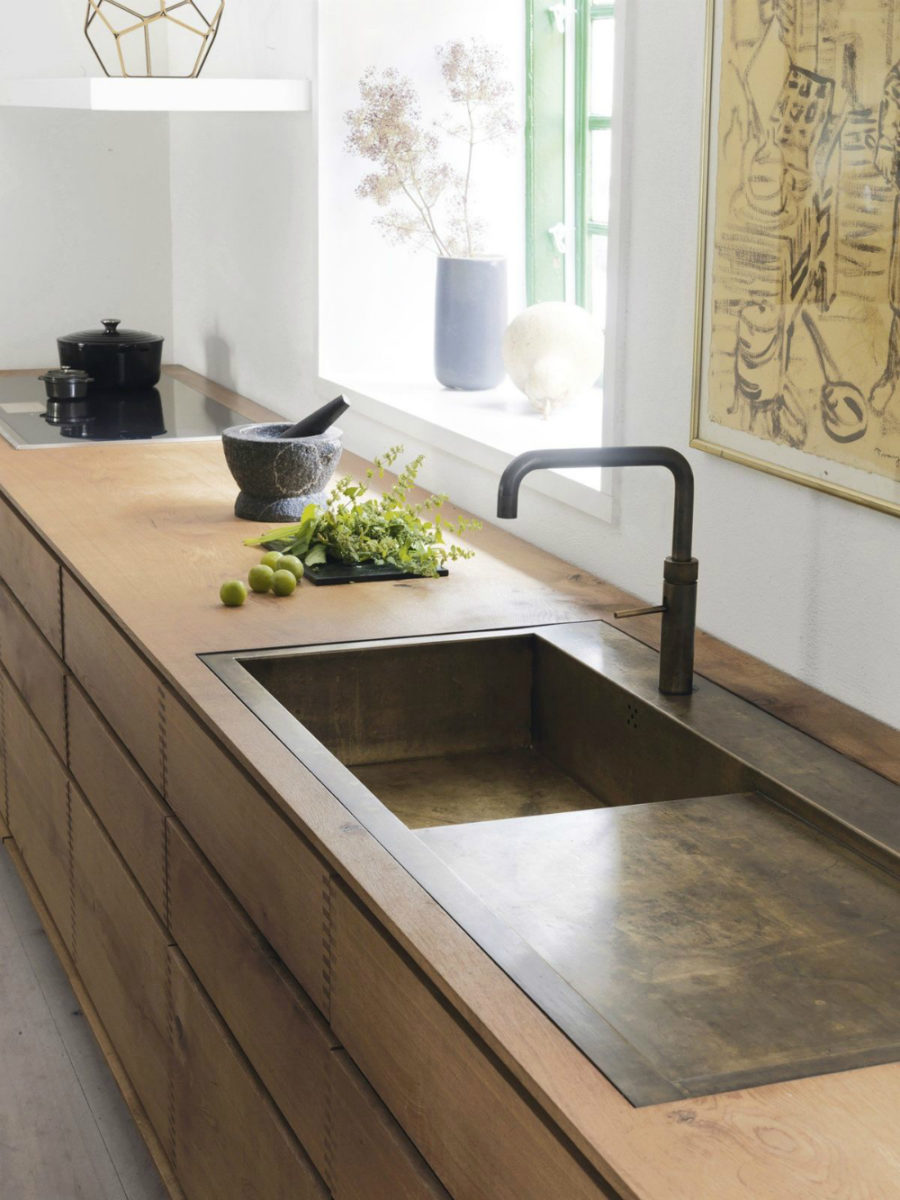
Porcelain sinks are another traditional option that has been popular for decades. These sinks are typically made from metal or cast iron with a porcelain coating that gives them a glossy, bright appearance. Porcelain sinks come in a variety of colors, but they are most commonly white or cream, adding a clean, classic look to kitchens. While porcelain sinks are affordable and easy to clean, they are more prone to chipping and scratching than other materials. Dropping a heavy pot or pan in the sink can cause damage to the porcelain surface. Additionally, some staining agents, such as coffee or red wine, can discolor the sink if spills are not cleaned up quickly.
Natural stone sinks, such as those made from marble or soapstone, offer a stunning, high-end look that can elevate the style of any kitchen. These sinks are carved from solid blocks of stone, giving them a unique appearance with natural variations in color and veining. Stone sinks are incredibly durable and resistant to heat and scratches, making them a long-lasting option. However, stone sinks are porous, which means they can absorb liquids and develop stains if not sealed properly. They also require regular maintenance, including resealing, to maintain their appearance over time. Due to their weight and cost, natural stone sinks are typically a more expensive option compared to other materials.
Another popular material is acrylic, which is often chosen for its affordability and versatility. Acrylic sinks are lightweight, easy to install, and come in a wide range of colors and styles. They are also non-porous, which makes them resistant to bacteria and easy to clean. However, acrylic sinks are not as durable as materials like stainless steel or granite composite. They can be prone to scratching, and they may not handle high temperatures as well, which could lead to warping or discoloration if hot pots or pans are placed directly on the surface.
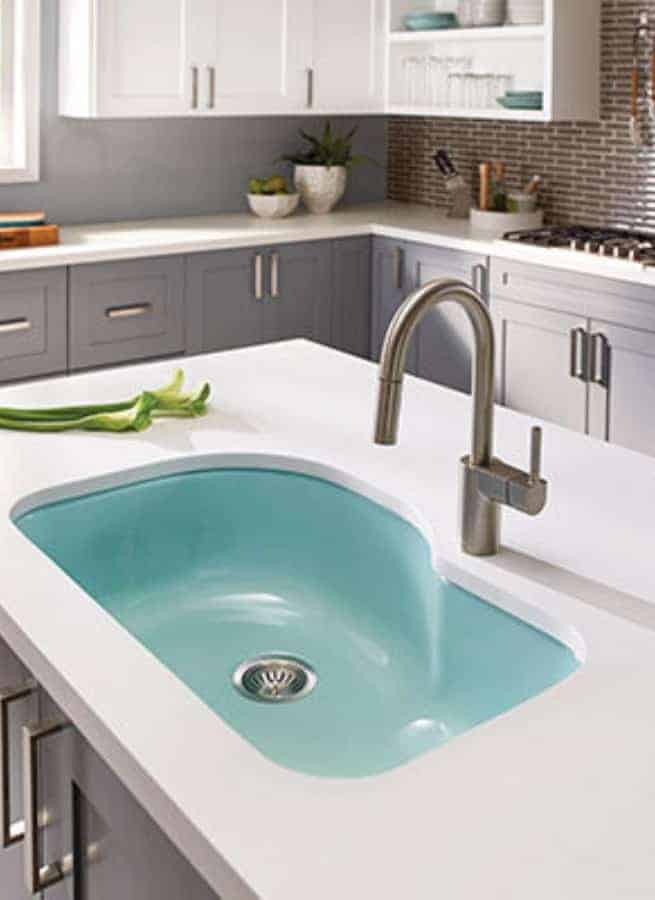
Concrete sinks are gaining popularity in modern and industrial-style kitchens. These sinks offer a raw, minimalist look that can add an artistic element to your kitchen design. Concrete sinks are highly customizable in terms of size, shape, and color, allowing for a truly unique design. They are also incredibly durable and resistant to heat. However, concrete is porous, so it requires sealing to prevent stains and water damage. Concrete sinks can also be prone to cracking over time, particularly if they are not properly reinforced or if the temperature changes drastically.
Solid surface sinks, made from materials like Corian or other synthetic resins, offer a seamless, integrated look when paired with solid surface countertops. These sinks are durable, non-porous, and easy to clean, making them an excellent choice for busy kitchens. Solid surface sinks are also resistant to stains and can be easily repaired if they do become scratched or damaged. One drawback is that they can be more expensive than some other options, and they may not offer the same level of heat resistance as materials like stainless steel or granite composite.
Glass sinks are less common in kitchens but are an option for those who want a distinctive, modern look. These sinks are typically made from tempered glass, which is resistant to heat and shattering. Glass sinks come in a variety of colors and finishes, including frosted or textured glass. While they can add a sleek, contemporary touch to a kitchen, glass sinks are more prone to showing water spots and fingerprints, requiring regular cleaning to maintain their appearance. They are also more fragile than other sink materials, which can be a concern in busy households.

Another interesting option is bamboo sinks, which are an eco-friendly and sustainable choice. Bamboo sinks are made from laminated bamboo strips that are treated to resist water and moisture. These sinks are lightweight, easy to install, and offer a unique, natural look that complements earthy or minimalist kitchen designs. However, bamboo sinks are not as durable as other materials like stainless steel or granite composite. They require regular maintenance to prevent water damage and may not hold up as well under heavy use.
Some homeowners opt for a combination of materials in their kitchen sink, such as a stainless steel basin with a wooden or bamboo cutting board insert. This hybrid design can offer the best of both worlds, providing durability and functionality while incorporating unique materials that enhance the kitchen’s style. A hybrid sink can be a great option for those who want both form and function without sacrificing one for the other.
Lastly, it’s important to consider how the sink material will complement the overall design of your kitchen. For example, a sleek stainless steel sink may look out of place in a traditional or rustic kitchen, whereas a cast iron or fireclay sink would blend in perfectly. On the other hand, a natural stone or copper sink might be the ideal centerpiece for a high-end, luxurious kitchen. The sink material should harmonize with other elements in your kitchen, such as countertops, cabinets, and appliances, to create a cohesive design.
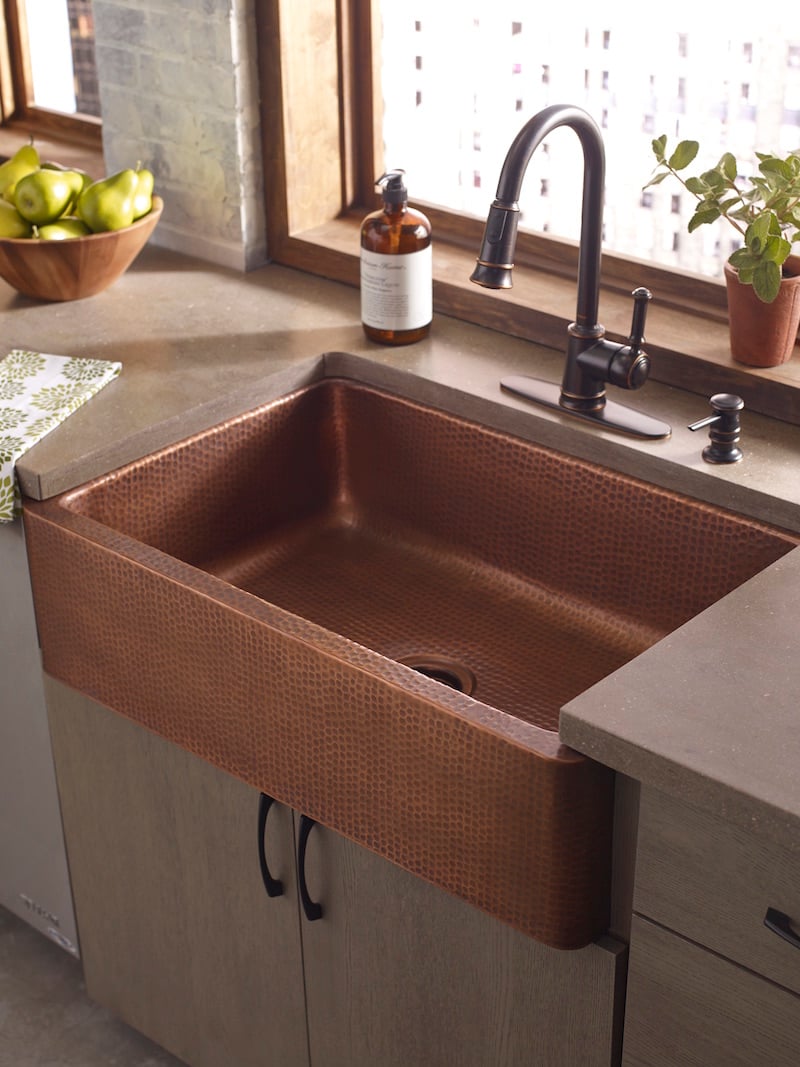
Common Mistakes to Avoid:
Choosing aesthetics over functionality: Many homeowners fall in love with the look of a particular sink material without considering how it will hold up in daily use. While copper or porcelain sinks may look stunning, they may not be the best option for households that require a more durable, low-maintenance sink. Always consider your lifestyle and how often you use your sink before deciding on the material.
Not considering weight and installation requirements: Some sink materials, like cast iron, fireclay, or stone, can be extremely heavy and may require extra support from the countertop or cabinetry. Failing to account for this during installation can result in structural damage over time or a sink that is not properly supported.
Overlooking the need for maintenance: Certain sink materials, such as copper, natural stone, or fireclay, require regular maintenance to preserve their appearance and functionality. Homeowners who are not willing to commit to sealing, polishing, or careful cleaning may find that their sink deteriorates more quickly than expected.
Ignoring the compatibility with countertops: The sink material should be chosen in conjunction with your countertop material. For example, heavy sinks like stone or cast iron may not be suitable for lightweight countertops like laminate or tile, as they can cause damage or require special installation techniques.
Choosing the wrong size for the kitchen layout: Selecting a sink that is too large or too small for your kitchen layout can disrupt both the functionality and the visual balance of the space. Always consider the size of your kitchen and the available counter space before deciding on sink material and size.
Failing to account for water quality: Some materials, such as stainless steel or copper, can show water spots more easily, especially if your area has hard water. Homeowners in these regions may need to clean their sinks more frequently or install a water softener to minimize mineral buildup.
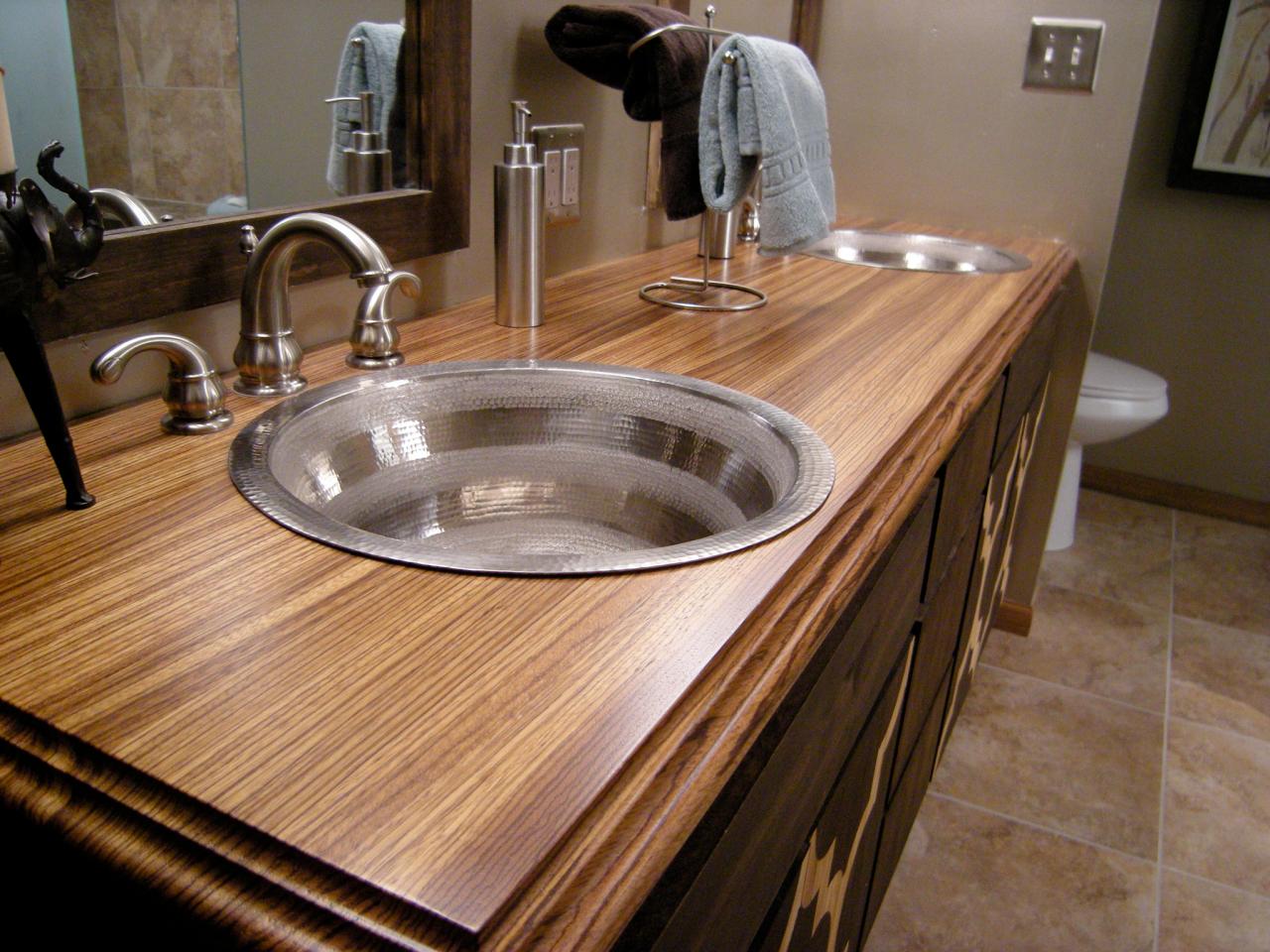
What is the most durable material for a kitchen sink?
Stainless steel is often considered the most durable material for a kitchen sink. It is resistant to rust, corrosion, and heat, making it ideal for heavy use in busy kitchens. It also withstands dents and scratches fairly well, especially if you choose a lower gauge (thicker) steel. Granite composite is another highly durable option, as it is resistant to heat, stains, and scratches.
Are granite composite sinks better than stainless steel?
Granite composite sinks offer several advantages over stainless steel sinks, including better resistance to scratches, stains, and heat. They also tend to be quieter when dishes are placed inside them due to their solid construction. However, granite composite sinks are heavier and more expensive than stainless steel, and they may require more careful maintenance to keep their matte finish looking pristine.
Do copper sinks require a lot of maintenance?
Yes, copper sinks require more maintenance compared to other materials. While copper is naturally antimicrobial, it is prone to developing a patina over time, which can darken unevenly if not cared for properly. To maintain its original appearance, homeowners need to regularly clean and dry the sink, avoid harsh chemicals, and occasionally polish the surface.

Can porcelain sinks chip or crack easily?
Porcelain sinks, while beautiful, can chip or crack if a heavy object is dropped on them. The porcelain coating is more fragile than other materials like stainless steel or granite composite. It is also prone to staining, particularly if colored liquids like red wine or coffee are not cleaned up quickly.
Are natural stone sinks a good option for busy kitchens?
Natural stone sinks, such as those made from marble or soapstone, can be a beautiful and durable choice, but they are not always the best option for busy kitchens. These sinks require regular sealing to prevent staining and water damage, and they are more prone to developing etches or scratches. For high-traffic kitchens, materials like stainless steel or granite composite may be more practical.
What sink material is best for resisting stains?
Granite composite and stainless steel are both excellent options for resisting stains. Granite composite sinks are non-porous, making them highly resistant to staining agents, while stainless steel does not absorb liquids and can be easily cleaned. Fireclay sinks are also resistant to stains, but their enamel coating can become discolored over time if not maintained.
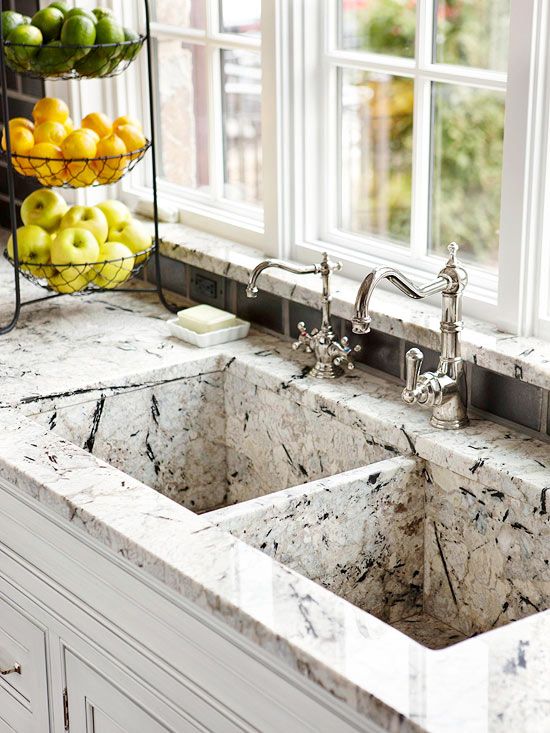
Related Posts:
- Drain Stopper Stuck In Kitchen Sink
- Farm Sink Kitchen Design
- Moen All In One Kitchen Sink
- Cheap Kitchen Sink And Tap Sets
- Drano In Kitchen Sink With Garbage Disposal
- Contemporary Stainless Steel Kitchen Sinks
- Small Kitchen Sink Drainer
- Retro Kitchen Sinks For Sale
- Replacement Kitchen Sink Faucet Head
- Copper Kitchen Sinks Direct